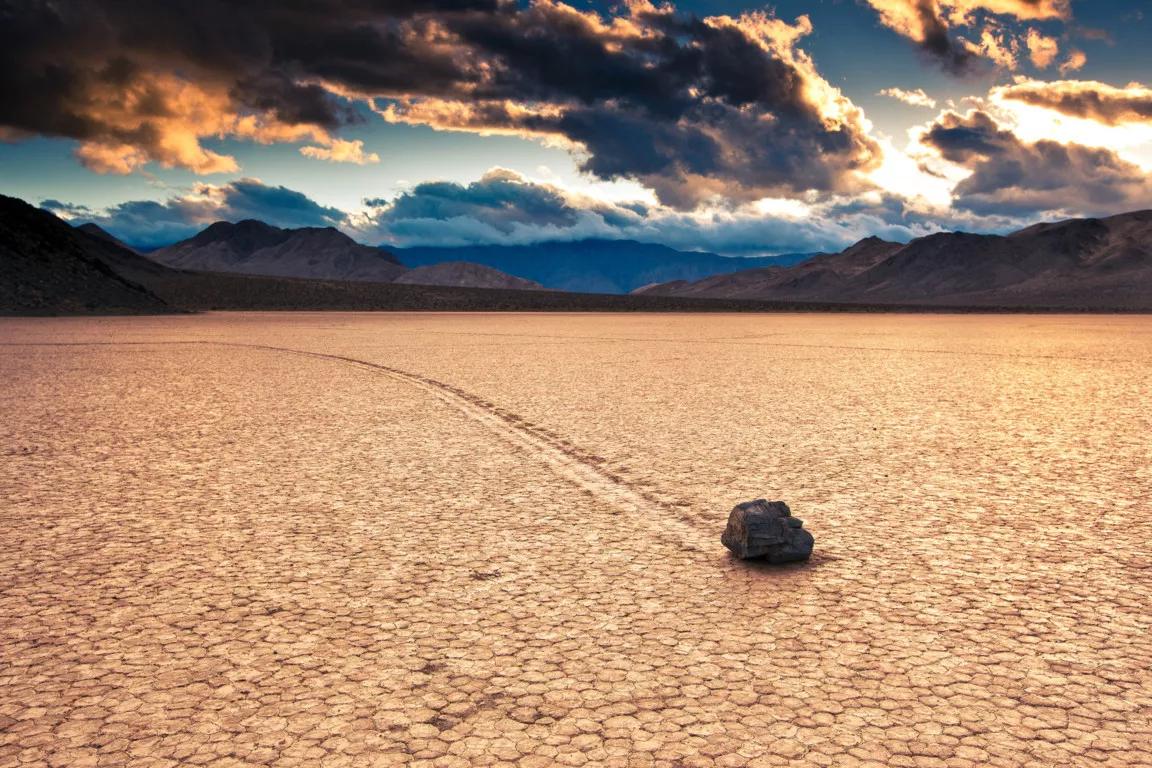Sailing Stones Mystery of Death Valley Solved

The Death Valley is home to a lot of mysteries and the mystery of the Sailing Stones is the latest one to have found an answer.
For a century hundreds of trails have been observed in a dry lake Racetrack Playa, California. These trails are traced by rocks, some weighing up to hundreds of pounds, moving in a zigzag manner. These Sailing Stones have puzzled scientists and enthusiasts and now after years of observation and patience the force behind these movements has been discovered.

Paleobiologist cousins Richard Norris and James Norris of the Scripps Institution of Oceanography have photographed them being driven by light winds across the lake bed.
Earlier it was believed that it may be caused due to magnetic effects of Earth, high speed winds, slippery algae and what not. Two years ago these scientists attached GPS units to some of the rocks on Racetrack Playa and waited to let the patience do the trick.
“We expected to wait five or ten years without anything moving, but only two years into the project, we just happened to be there at the right time to see it happen in person,” says Richard Norris.

“On Dec. 21, 2013, ice breakup happened just around noon, with popping and cracking sounds coming from all over the frozen pond surface,” said Richard Norris. “I said to Jim, ‘This is it!'”
Explaining the findings The Washington Post writes:
“The Racetrack Playa must first fill with water — deep enough to float massive sheets of ice, yet still shallow enough to leave the rocks exposed. Nighttime temperatures must then get cold enough to freeze the water, forming mammoth-size ice panes — thin enough to glide across the lake bed, yet thick enough to gain momentum and clear the stones in their way. As the next day’s afternoon sun thaws the ice, these sheets break apart into chunks that, with any luck, a steady wind will propel across the playa pool. When the ice chunks hit the rocks — ranging from pebble to boulder-size pieces weighing up to 200 pounds – the stones are driven across the soft mud below, leaving behind their signature trails.”
The full research can be read in the journal PLOS One






